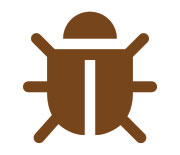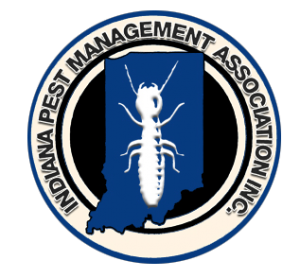Carpenter Bees
In the spring of the year many homeowners begin to notice large furry bees with black and yellow coloring hovering and “bouncing” off of their wooden siding, overhangs and fences. These are female Carpenter Bees that have already mated and are in search of a suitable wooden surface to bore into for the purpose of laying their eggs.
Their ability to penetrate numerous finished and unfinished wooden surfaces accounts for their common name. Old (dark) and new (light) Carpenter Bee holes can be seen on wooden siding, wooden overhangs and facia boards, window sills, playground structures, fence posts and railings. The fecal droppings from these large bees are quite obvious below active holes and can cause considerable staining on both wood and vinyl siding.
Unlike the similar looking Bumble Bees that establish colonies closer to ground level, these bees exhibit solitary nesting behavior. The eggs are laid into galleries behind the bored hole and hatch into larvae which resemble tiny caterpillars. The larvae feed on pollen (that was earlier inserted into the tunnels) and then advance to the pupal or cocoon stage. Upon emerging in early summer, the adult bee bores its way out of the original entrance hole to forage before returning in the fall to overwinter.
It is the presence of the bees themselves, the damage to the wood and the staining of the surfaces that motivate people to pursue control measures. Residual insecticides in the form of liquids and dusts can be applied directly into the holes and surrounding areas to eradicate and repel the adult bee. Unfortunately, these pests will bore holes in wooden siding, peaks and overhangs that are not easily accessible. In such cases control can only be achieved by hiring a professional who has the proper equipment to introduce a liquid residual to these key areas.
Monroe Pest Control Inc. renders exterior treatments for carpenter bees by placing the liquid insecticides under pressure. Our truck mounted application units are equipped with gasoline engines and piston pumps which propel the material from a 50- gallon holding tank. Access to all points around the exterior of the structure is achieved with several hundred feet of rubber hose. The application tool at the end of the hose has an adjustable nozzle that allows us to manipulate spray pattern and pressure.
Since Carpenter Bees are very active during the daylight hours many are eliminated immediately upon the rendering of the exterior treatment. Others are repelled up to 60 days as the residual properties of the insecticides are effective even after drying. A thorough treatment of the exterior for Carpenter Bees will also provide outstanding control of carpenter ants, wasps, spiders, wood roaches, earwigs, etc.
Our exterior service can be supplemented by an interior application for additional protection from a wide variety of other common crawling insects. We offer this as a one-time remedial or as a twice per year (spring and fall) preventative service to provide a pest free living environment throughout the warm months of the year.








